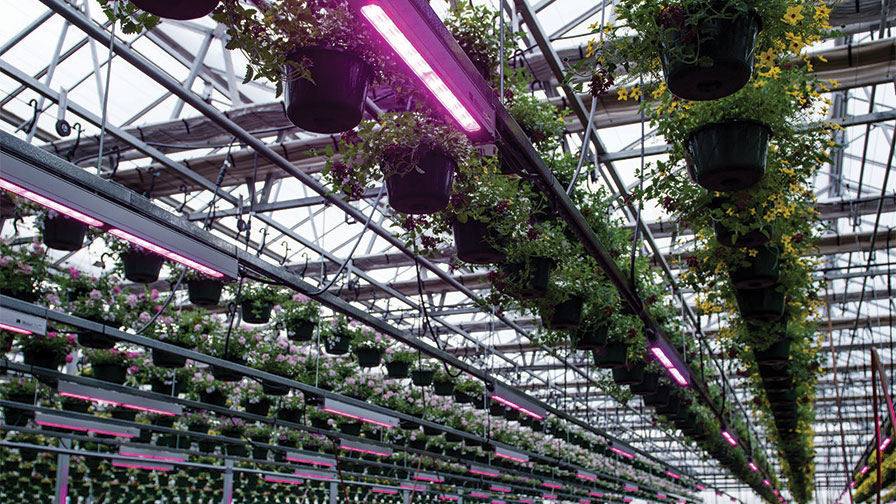The Ins and Out of Greenhouse Crop Lighting Systems
 There are multiple supplemental lighting systems available for controlled-environment growers. In the fourth week of the Plant Lighting Short Course, you will learn how to use online tools to determine the benefits of supplemental lighting, compare the pros and cons of different technologies, and learn from growers about what they consider in greenhouse lighting systems. The program takes place on November; click here to sign up.
There are multiple supplemental lighting systems available for controlled-environment growers. In the fourth week of the Plant Lighting Short Course, you will learn how to use online tools to determine the benefits of supplemental lighting, compare the pros and cons of different technologies, and learn from growers about what they consider in greenhouse lighting systems. The program takes place on November; click here to sign up.
Here’s an overview of what you can expect:
“HPS versus LED” High-pressure sodium (HPS) is the proven and conventional light fixture type used to increase plant growth, yield, and quality. Light-emitting diodes (LEDs) are increasingly replacing HPS because of their greater energy efficiency, spectral options, and longevity. However, there are some greenhouse lighting applications or situations where HPS may still be more economical. This presentation from Michigan State University’s Erik Runkle will discuss the pros and cons of these two lighting technologies, so that you can better understand what parameters to consider when purchasing a high-intensity lighting system.
“Growers’ considerations about plant lighting” Commercial growers must consider many factors when choosing an adequate supplemental crop lighting system. A suitable system should meet crops’ light requirements, be cost effective and reliable, and provide growers enough benefits to justify the high installation costs. During this panel, hear from experienced growers about the main challenges and benefits related to supplemental lighting in ornamentals, vegetables, and cannabis production.
“Fixture characteristics and mounting considerations” In considering designs for lighting systems, or in switching from HPS to LED fixtures, there are many factors to consider beyond just energy use. Fixtures of equivalent light output often cannot be directly swapped out without fully understanding the differences in lighting technology. This presentation outlines important considerations such as the effect of mounting height and reflector or lens design on light uniformity and heat generation. Safety considerations and maintenance requirements are also discussed, along with how lighting fixture output decreases over time. As residential and agricultural land uses encroach on each other, mitigation of light pollution is a key consideration when operating a supplemental lighting system. The need to use supplemental lighting and to take advantage of lighting at night (particularly in northern latitudes) often comes into conflict with community members. Technology and techniques to reduce light pollution are outlined.
“Using Virtual Grower to assess the benefits of supplemental lighting” Virtual Grower 4 is in active development at USDA’s Agricultural Research Service, and here’s your chance to get a sneak preview of the interface. VG4 will be accessible with a web browser, so no software to download. A demo will be shown of the new interface, and upcoming features will be discussed.
Learn more about the “Fixture characteristics and mounting considerations” presentation in the video below!









